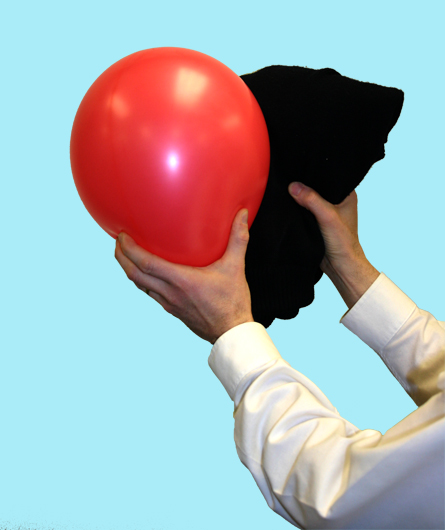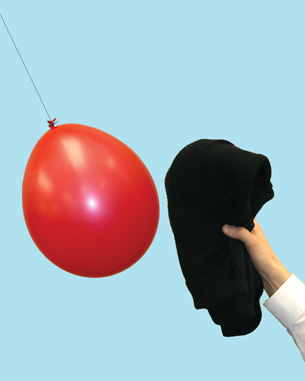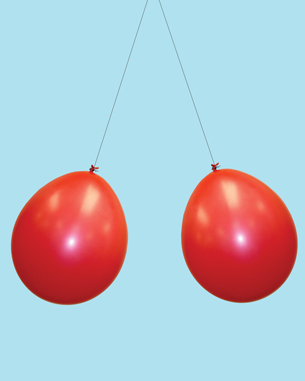Module 3
1. Module 3
1.4. Page 2
Module 3—Electrical Phenomena
 Explore
Explore

© Courtesy of COSI Columbus
The effect observed in this photo is due to static electricity, as was the case in the photo of the woman in Get Focused. In this case it is produced by the machine the girl is touching—a Van de Graaff generator. It’s a powerful tool for studying static electricity. It can safely illustrate many of the key concepts that are involved in more complicated phenomena like lightning. You’re going to learn more about the nature of the electrical transmission that occurs in a lightning strike, starting with a Van de Graaff generator.
 Try This: Charging Objects Using a Van de Graaff Generator
Try This: Charging Objects Using a Van de Graaff Generator
Think about charging objects using a Van de Graaff generator as you answer these questions:
TR 1. What do you already know about static electricity?
TR 2. How would you explain a person’s hair standing on end when he or she touches a Van de Graaff generator?
In this activity you will have a chance to apply what you know as you explore a number of intriguing demonstrations.
Your initial explanations of these ideas will mark your starting point as you begin this module. Even if you aren’t sure, go ahead and hypothesize as you determine what’s going on.
Lab Choice
This activity can be done in two ways. If you have access to a supervised science lab equipped with the materials and equipment listed on page 511 of your textbook, use Method A. If you do not have access to these facilities, use Method B. Both methods will require you to refer to page 511 in your textbook.
Method A: Using a Supervised Science Lab
Follow the instructions described in the “QuickLab” on page 511 of your textbook.
Method B: Without a Supervised Science Lab
Open the Charging Objects Using a Van de Graaff Generator multimedia object. This multimedia object follows the instructions outlined in the “QuickLab” on page 511 of your textbook, so you’ll need your textbook too.
 Module 3: Lesson 1 Assignment
Module 3: Lesson 1 Assignment
Remember to submit the answer to A 1 to your teacher as part of your assignment.
A 1. Record your observations and explanations for each of the following objects that interacted with the charged globe of the Van de Graaff generator:
- animal fur
- aluminum pie plates
- confetti
- soap bubbles
Charging a Balloon

You can produce your own electrostatic effects using two balloons, about 2 m of thread, and a wool sweater.
 Self-Check
Self-Check
SC 1. Inflate one of the balloons. Use about 1 m of thread to tie the balloon to a high point in a room away from any walls. A light fixture works well for this. Rub the balloon with the wool sweater; then bring the sweater close to the balloon but don’t let them touch. Record your observations.
SC 2. Inflate the second balloon and tie it to the same spot as the first balloon. Ensure that the centres of the balloons are at the same height above the floor. Rub each balloon vigorously with the wool sweater, and then observe what happens to each balloon. Record your observations.
SC 3. Apply Newton’s third law to the electrostatic forces that act on each balloon.
SC 4. Draw a free-body diagram to illustrate the forces acting on each balloon.
 Self-Check Answers
Self-Check Answers
SC 1. The balloon is attracted to the wool sweater. It is difficult to have the balloon not touch the wool sweater because the closer the balloon gets to the sweater, the stronger the attraction to the sweater.
SC 2. Each balloon repels the other. This force of repulsion acts to push the balloons apart.
SC 3. According to Newton’s third law, the force exerted by the first balloon on the second balloon is equal but opposite to the force exerted by the second balloon on the first balloon. The equation looks like this:
![]()
SC 4. 
 Read
Read
Your experiences with the balloons are similar to electrostatic events that people have been observing for thousands of years. The basic properties of electricity were developed from these experiences. You can learn more about what other ancient peoples thought about lightning and electricity by reading page 510 and the top half of page 512 of your textbook.
 Self-Check
Self-Check
You can check your understanding by answering these questions.

In this photo a balloon suspended by a thread is attracted to a wool sweater.

In this photo two balloons are suspended from a point on a ceiling. The balloons repel each other.
SC 5. Explain how the law of charges applies to the balloons shown in the preceding photographs.
SC 6. Recall your observations of the Van de Graaff generator lab earlier in this lesson. Provide one example of an object repelling and one example of an object attracting in the lab activity.
 Self-Check Answer
Self-Check Answer
SC 5. The law of charges states that like charges repel and unlike charges attract. The balloon and the sweater must have opposite charges since they are attracted to one another. The two balloons must have like charges since they repel one another.
SC 6. There are many examples of objects being repelled. The animal fur, the aluminum pie plates, and the confetti in the cup were all repelled by the Van de Graaff generator and each other. The first soap bubble was attracted to the Van de Graaff generator, while the other soap bubbles were repelled.